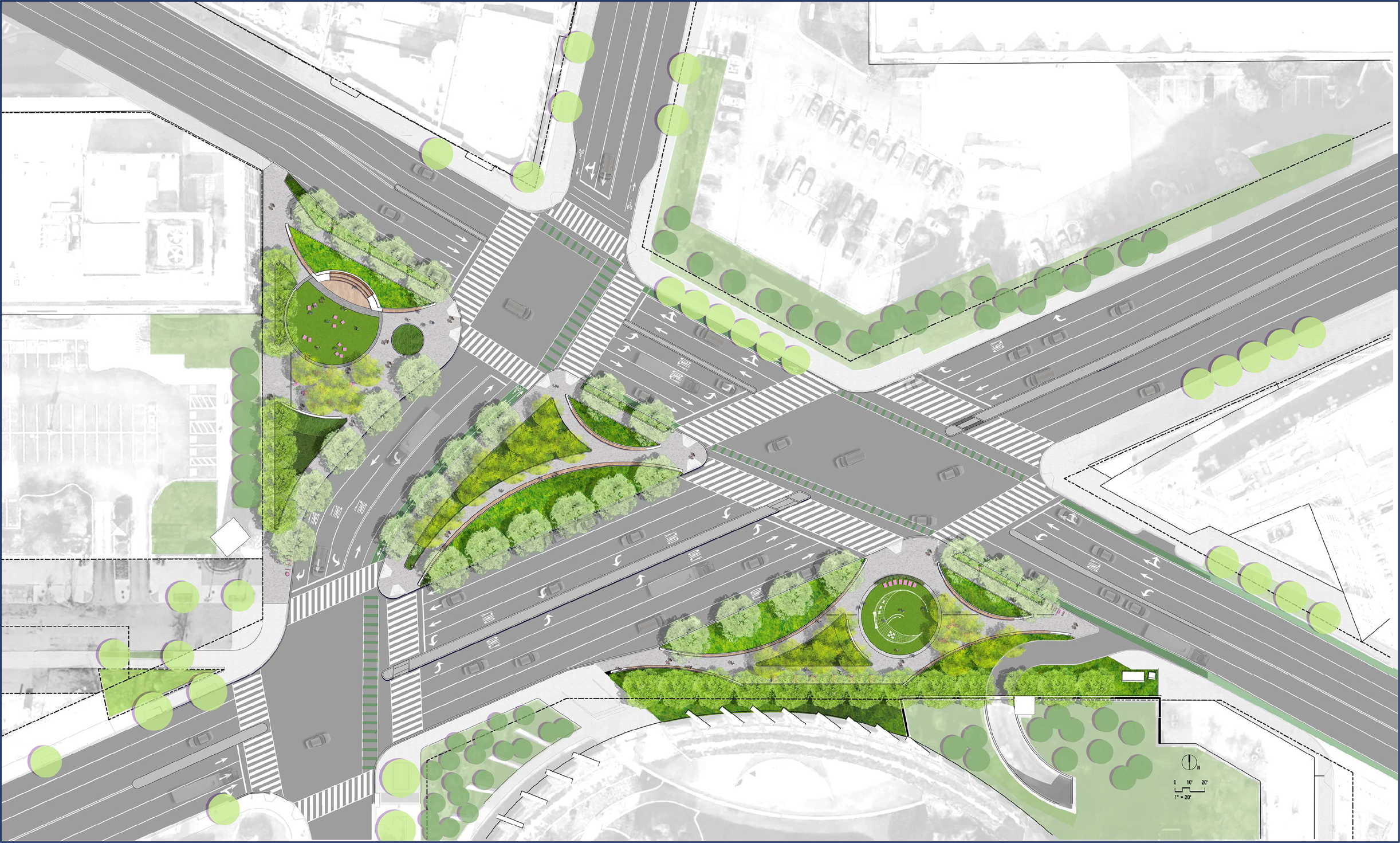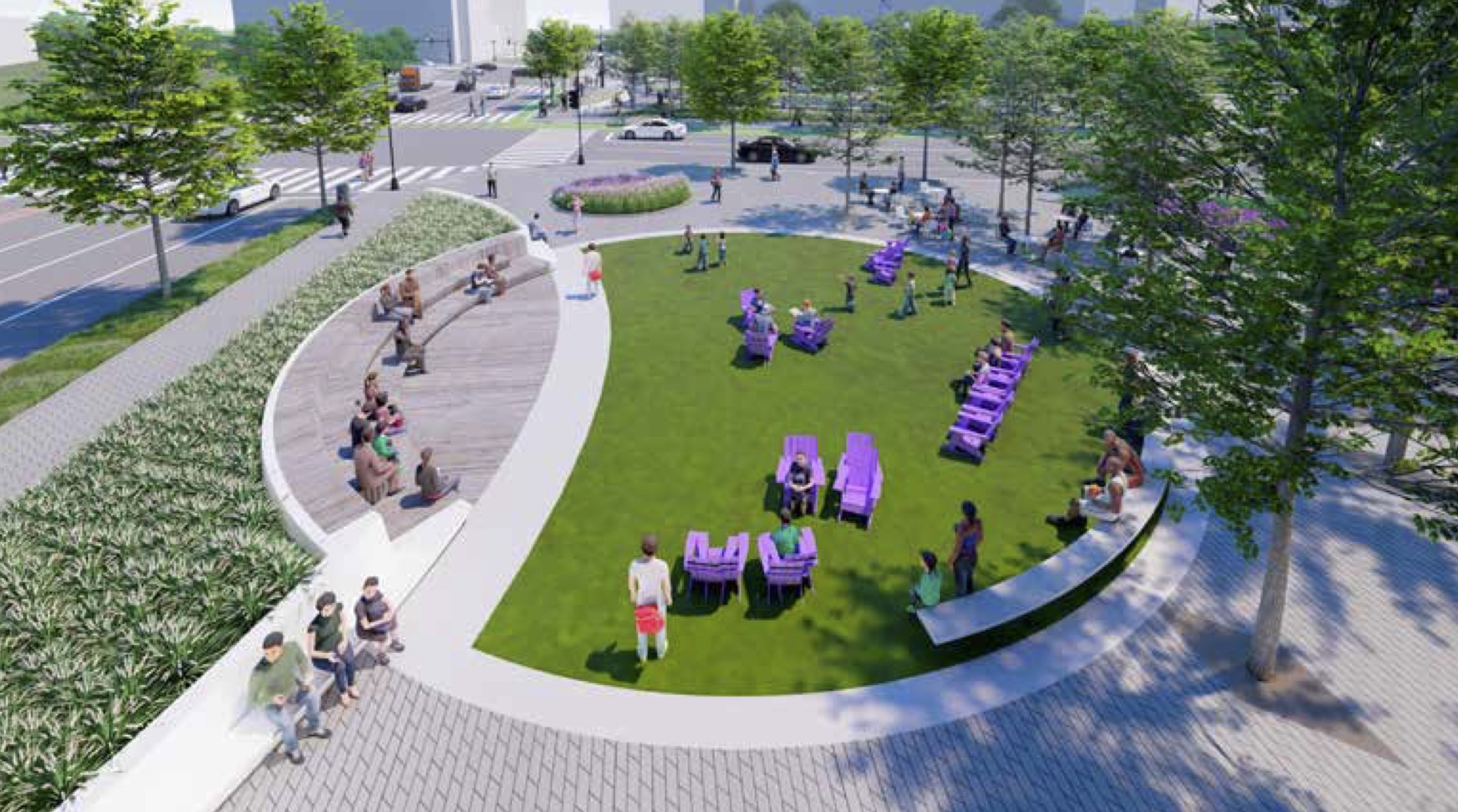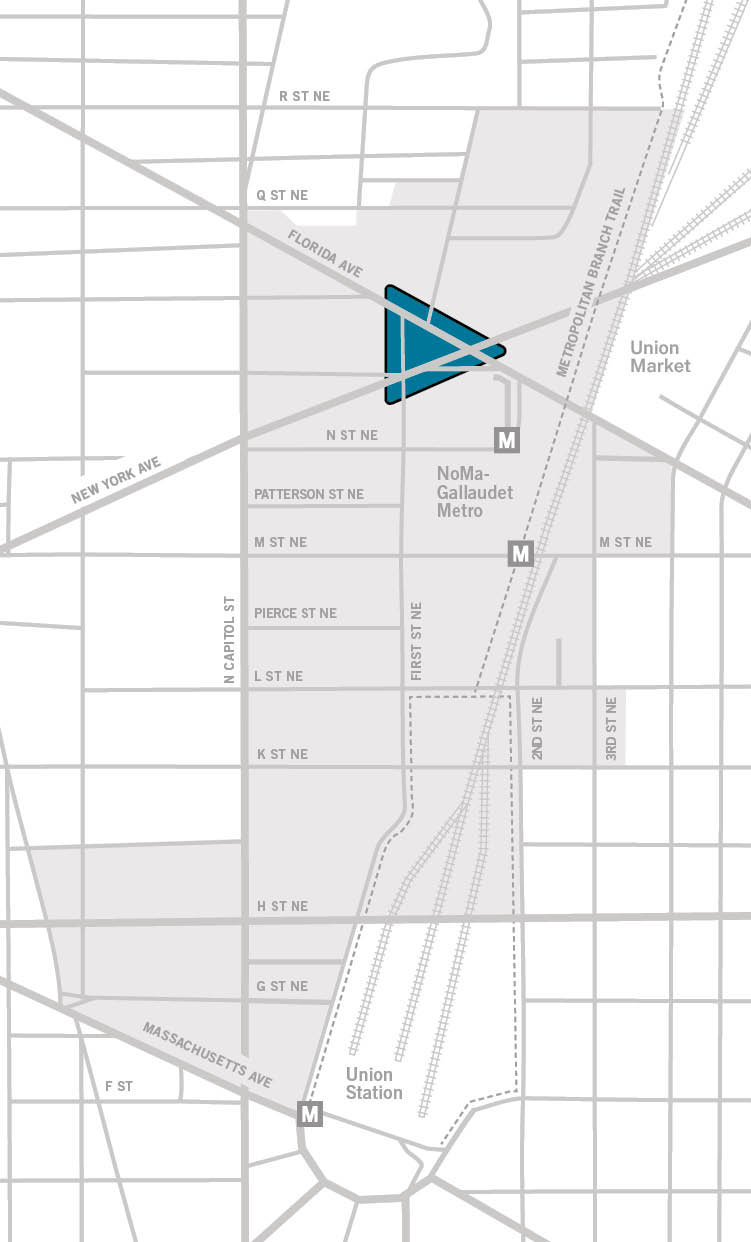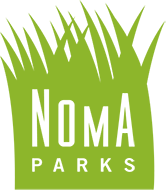
Florida – NY Avenue Intersection
The intersection of New York Avenue and Florida Avenue NE on the northeast side of NoMa has been both a gateway and a chronic challenge for the District for generations. Because it was one of the city’s most dangerous intersections, in 2010 DDOT attempted to improve vehicular and pedestrian interaction through a “virtual circle” configuration. The intersection was known locally as “Dave Thomas Circle” for the Wendy’s that had been on an island in the middle of numerous lanes of traffic since the early 1980s. However, the intersection continued to be plagued by severe traffic and safety challenges. For many years, the neighborhood, including the NoMa BID, advocated for improvements that would improve safety and connectivity.

Final approved concept plan for the Florida-NY Avenue intersection project meaningfully increases green and usable community space in NoMa.
In 2019, Mayor Muriel Bowser included $35 million in the District’s capital budget to complete the intersection’s reconfiguration, which the D.C. Council approved. DDOT had already gained federal environment approval for a proposed new road alignment, design, and overall number of traffic lanes. While the broad parameters established through the roadway placements were set during the federal environmental approval process, NPF saw the project as a once-in-a-generation opportunity to not only improve traffic but to transform the hostile and car-centered intersection into a pedestrian-friendly, multimodal circle with added usable community spaces. The Foundation, the BID, and DDOT agreed to focus on ways to enhance the intersection that would improve safety and quality of public space experience for all users and improve economic vitality and access to local businesses, educational institutions, human services organizations, and affordable housing in the area.
To advance these goals, the BID and NPF partnered with DDOT in sponsoring an Urban Land Institute Technical Advisory Panel in 2019, to engage various experts and the community in reimagining the intersection through the lens of public spaces. In partnership with DDOT, the Foundation took the panel’s ideas and hired landscape architecture firm SWA/Balsley to design public spaces. The firm brought extensive experience working with transportation agencies to transform unwieldy, high-traffic urban spaces into community assets.

The area adjacent to the planted public spaces at the headquarters of the Bureau of Alcohol, Tobacco, Firearms and Explosives incorporates a large sculptural play and exercise structure suitable for use by people of all ages, as well as seating areas and gardens.

The triangular park bordered by First Street, Florida Avenue, and New York Avenue will include a play/performance area, seating, and plantings.

The easternmost parcel includes planted berms with benches to mitigate the noise and visual impact of traffic and space among planted beds reserved for future sculpture placement.
NPF worked closely with the community to ensure the new design offered the amenities that neighbors wanted and that users would be protected from noise and traffic with planted berms and lots of trees and greenery. The final design includes 1.3 acres of new land available for community use across three great new parks, each with a distinct character. By creating the ability to close the segment of First Street NE between New York Avenue and Florida Avenue, the design allows for a connection between the park adjacent to 64 New York Avenue NE and a triangular park where the Wendy’s once was. This large area includes a play/performance area, seating, and plantings. Its planned uses include farmers markets and other events. The area adjacent to the planted public spaces at the headquarters for the Bureau of Alcohol, Tobacco, Firearms and Explosives (ATF&E) incorporates a large sculptural play and exercise structure suitable for people of all ages, as well as seating areas and gardens. This design is compatible with future public use of the plaza in front of the ATF&E headquarters, as was originally envisioned by architect Moshe Safdie for that building. The easternmost parcel will be affected the most by traffic. It includes planted berms with benches to mitigate the noise and visual impact of traffic and provides a comfortable passage connecting the northern and southern parts of NoMa. Space among planted beds with trees is included for future sculpture placement. In 2020, NPF delivered the completed design drawings to DDOT.
Unlike the other NoMa park spaces, the Foundation is not involved in the land acquisition or construction of these park spaces, but instead used its grant funds to pay for the designs and manage the design and community input processes for the new spaces. The spaces will be constructed and owned by DDOT. But in order to ensure they are far more than grassy medians, they involve many nonstandard features that DDOT does not maintain. As a result, the NoMa BID agreed to fund the maintenance of these critical elements. While different from the other NoMa parks projects, this new high-quality public space would not have been possible without the advocacy and funding that NPF provided. The project is set to begin construction in spring 2023.

Perspective view looking west along New York Avenue.
NoMa Parks Foundation © 2024

